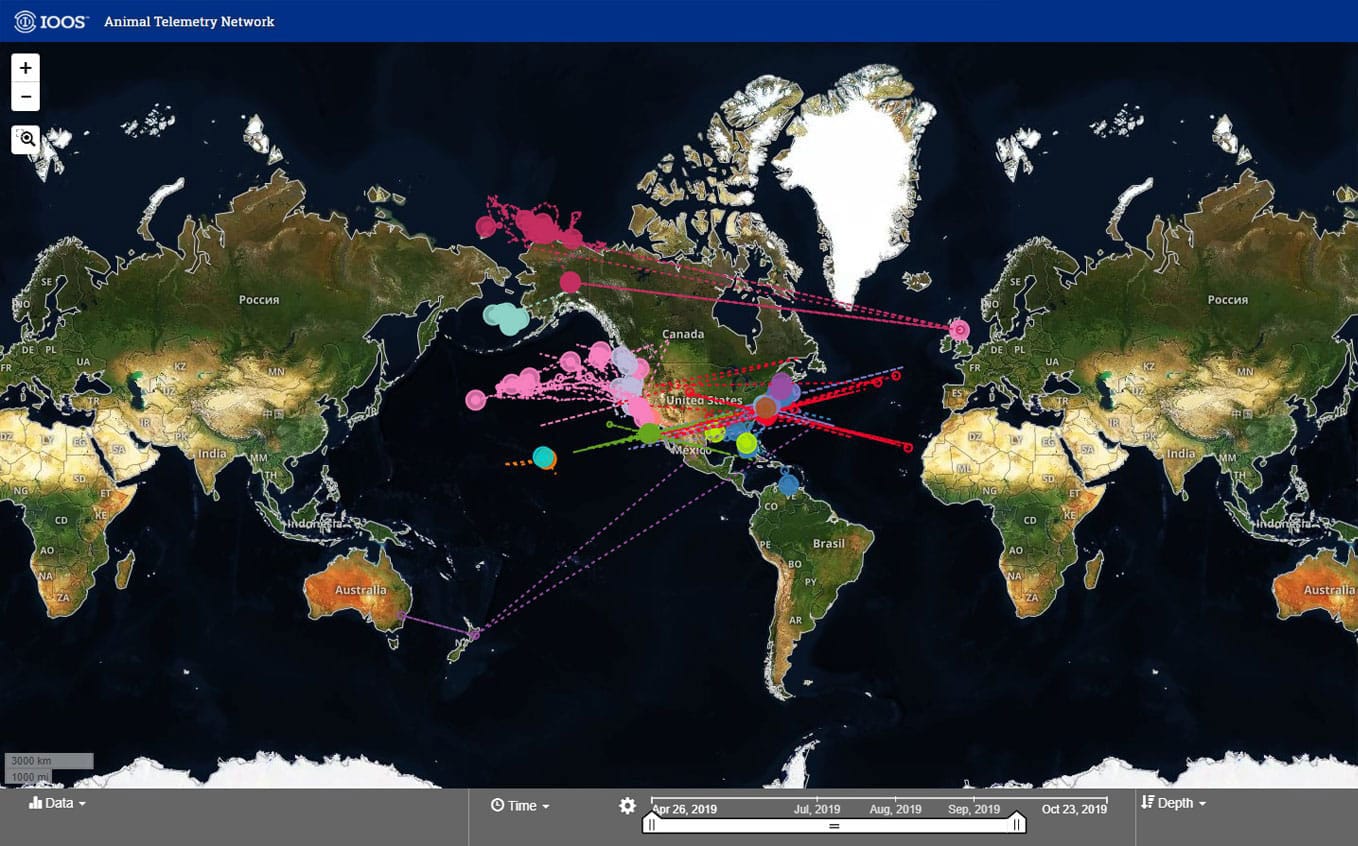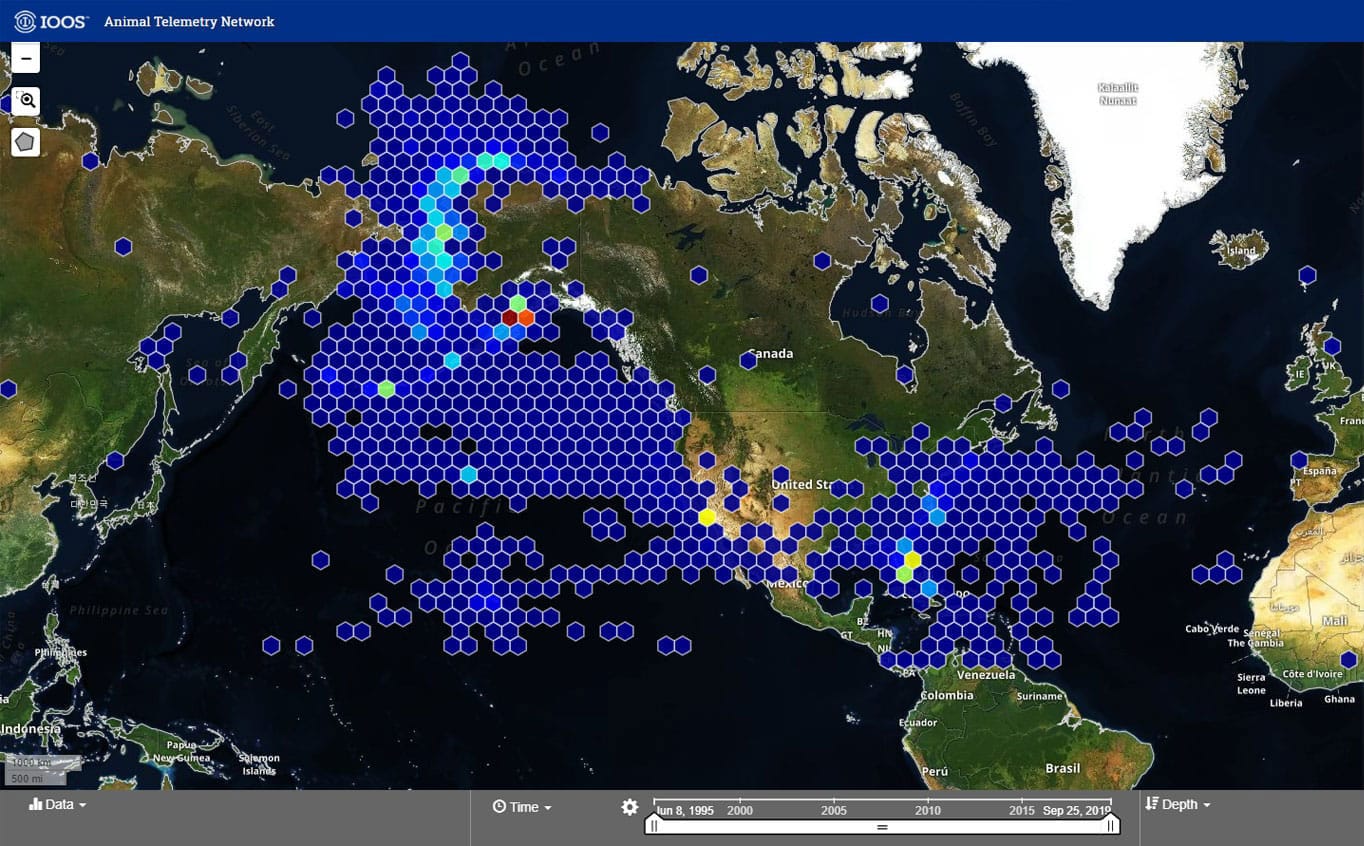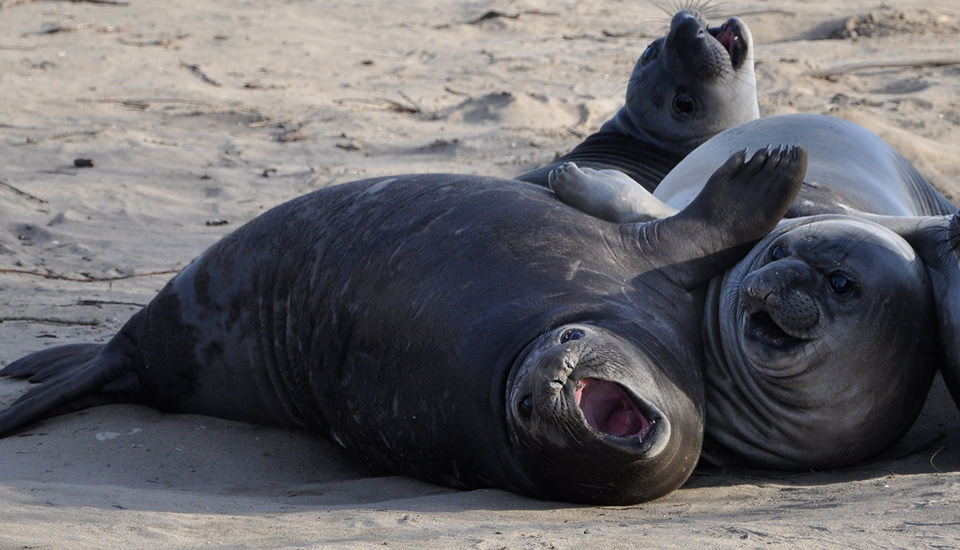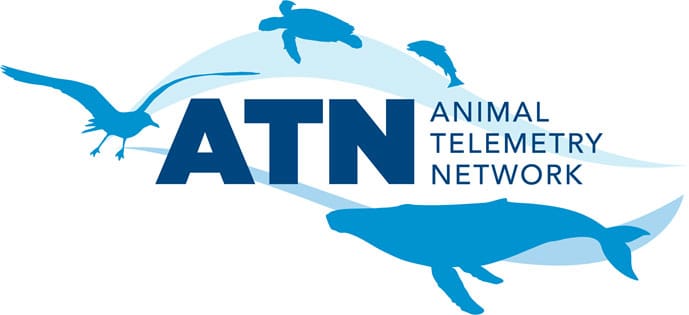

The Integrated Ocean Observing System's Animal Telemetry Network Data Assembly Center is an access point to search, discover, and access animal telemetry data and associated oceanographic datasets from a wide variety of species and platforms. Use the slider on the image to see examples of animal telemetry visualizations available from the online Center. On the right, the portal shows available animal telemetry data aggregated into hexagonal bins which indicate available data by geographic area; on the left, the same data shows tracks of individual animals. The online portal is available for anyone to use.
Animal telemetry is a powerful scientific tool. Consider an elephant seal equipped with a satellite tag, which allows scientists to passively gather data on its movements, biorhythms, and the temperature and salinity of the water it moves through. When the seal surfaces, the tag transmits the stored data either to the Argos satellite system or underwater acoustic receivers, which in turn transmit the data to researchers.
Telemetry data helps us understand marine life better. The information gleaned from the elephant seal, for instance, may be used for implementing the Endangered Species Act, the Marine Mammal Protection Act and the Fur Seal Act; performing National Environmental Policy Act analyses; providing Incidental Harassment Authorizations; and conducting Environmental Impact Assessments.

Telemetry tags help researchers discover where marine animals are, where they go, and what their environments are like.
If telemetry observations from one elephant seal can be that informative, imagine the power of integrating this data with other scientific observations, as well as with other animal telemetry projects. That's exactly the view taken by the U.S. Animal Telemetry Network (ATN), a multi-agency and research institution effort to create a connected scientific community around animal telemetry research.

The olive ridley turtle shown here washed up in the surf at Venice Beach in 2013. The distressed turtle suffered from hypothermia, starvation, and an inability to float. After rehabilitation that culminated in the turtle's recovery, the animal was released months later, equipped with a satellite tag. This device allowed researchers from NOAA's Southwest Fisheries Science Center and the Aquarium of the Pacific to track the released turtle's movements. In particular, scientists wanted to know whether the turtle would migrate south toward Mexico and warmer waters or remain in California's coastal waters, where it was initially found. Telemetry data indicate the turtle migrated to warmer waters. This information augments existing satellite telemetry tagging studies, allowing scientists to better understand the olive ridleys' migration between feeding and breeding grounds, which often occurs over great distances. Read the full story about this turtle.
The Data Assembly Center: Now Operational
This year, this effort took a big step forward with the transition of the ATN Data Assembly Center (DAC) from research to operations. Developed by Hopkins Marine Lab, drawing on their extensive work with databases and tag management, the DAC was built out by Axiom Data Science and launched in May. The operational DAC is a more universal product that supports a broad range of datasets and tag types while building on the existing U.S. Integrated Ocean Observing System capabilities. Axiom's history of developing adaptable data communications systems allows telemetry data contained within the ATN DAC to be integrated with other U.S. IOOS data streams, such as the environmental sensor map.
“By engaging with the marine animal telemetry community directly and often during the last three years, and by developing collaborative partnerships with local, state, and national and international programs, institutions and organizations, we have successfully taken the U.S. ATN Program from concept to a reality," said ATN Coordinator Bill Woodward.
The U.S. Animal Tracking Network, initiated in 2011, is an alliance of federal, state, tribal, regional, academic, and industry tagging partners. U.S. IOOS has led the network since 2016.

What is animal telemetry?
Animal telemetry, the science of gathering information on the movement and behavior of marine organisms using animal-borne sensors, or tags, is a rising star in the field of ocean observing. And over time, continuous, long-term observations illustrate not only animal movements but also help us see the signs and understand the effects of changes to the ecosystems they inhabit.
“Placing tags on marine animals has allowed the animal to show us their true range, use of habitat, movements and foraging behavior, and their migration corridors,” said Dr. Michael J. Weise, Program Manager of the Marine Mammals & Biology Program at the Office of Naval Research. "And importantly, we can also see how they respond to environmental and anthropogenic factors such as climate change, exposure to seismics or sonar, or other disturbances.”
As tags have decreased in size, researchers have been able to study animals ranging from six gram salmon smolts to 150 ton whales and everything in between. In addition, the capabilities of telemetry tag sensors have grown so that we are able to capture not only data about their movements, but also information about the animal (temperature, heart rate, oxygen levels), its behavior (vocalizations, breathing, tail beats), and data on their environment (external sound, temperature, salinity, light).
Social